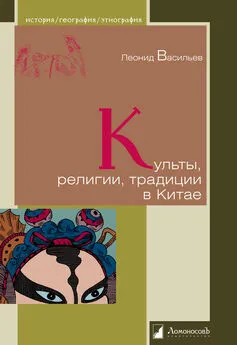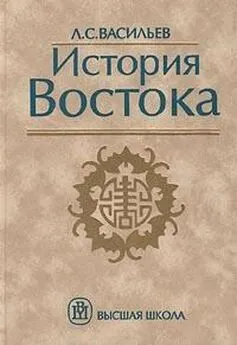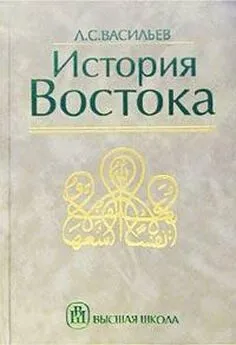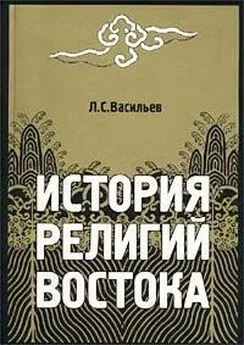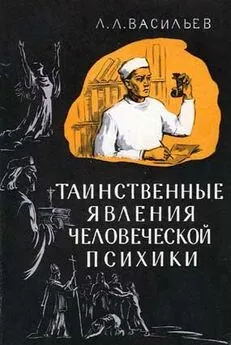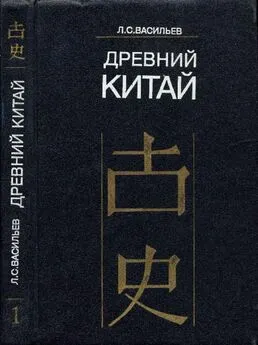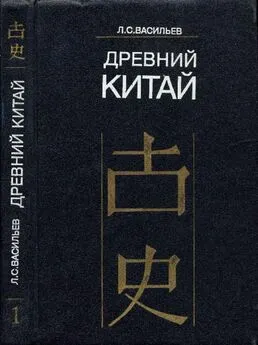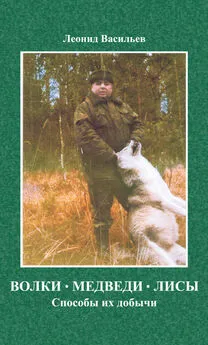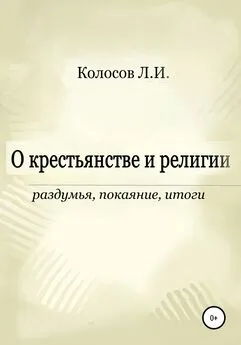Леонид Васильев - Культы, религии, традиции в Китае
- Название:Культы, религии, традиции в Китае
- Автор:
- Жанр:
- Издательство:Литагент «Ломоносовъ»77e9a3ea-78a1-11e5-a499-0025905a088e
- Год:2015
- Город:Москва
- ISBN:978-5-91678-254-7
- Рейтинг:
- Избранное:Добавить в избранное
-
Отзывы:
-
Ваша оценка:
Леонид Васильев - Культы, религии, традиции в Китае краткое содержание
Книга Леонида Васильева адресована тем, кто хочет лучше узнать и понять Китай и китайцев. Она подробно повествует о том, , как формировались древнейшие культы, традиции верования и обряды Китая, как возникли в Китае конфуцианство, даосизм и китайский буддизм, как постепенно сложилась синтетическая религия, соединившая в себе элементы всех трех учений, и как все это создало традиции, во многом определившие китайский национальный характер. Это рассказ о том, как традиция, вобравшая опыт десятков поколений, стала образом жизни, в основе которого поклонение предкам, почтение к старшим, любовь к детям, благоговение перед ученостью, целеустремленность, ответственность и трудолюбие. А также о том, как китайцам удается на протяжении трех тысяч лет сохранять преемственность своей цивилизации и обращать себе на пользу иноплеменные влияния, ничуть не поступаясь собственными интересами. Леонид Васильев (1930) – доктор исторических наук, профессор, главный научный сотрудник Института востоковедения Российской АН.
Культы, религии, традиции в Китае - читать онлайн бесплатно ознакомительный отрывок
Интервал:
Закладка:
215. Bishop C. W., The Beginnings of North and South in China, – «Pacific Affairs», vol. VII, 1934, № 3.
216. Blofeld J., Life in a Chinese Buddhist Monastery, – THM, vol. VIII, 1939, № 2.
217. Вlоfeid J., The Zen Teaching of Hui Hai, London, 1962.
218. Вodde D., China’s First Unifier, Leiden, 1938.
219. Воdde D., Dominant Ideas in the Formation of Chinese Culture, – JAOS, vol. 62, 1942, № 4.
220. Воdde D., Harmony and Conflict in Chinese Philosophy, – SCT. 221. Воdde D., Authority and Law in Ancient China, – SJ.
222. Вodde D., Feudalism in China, – «Feudalism in History», 1956.
223. Воdde D., China’s Cultural Tradition, New York, 1957.
224. Воdde D., Evidence for «Laws of Nature» in Chinese Thought, – HJAS, vol. 20, 1957, № 3 – 4.
225. Bodde D. Lieh-tsü and the Doves: A Problem of Dating, – AM, n. ser, vol. VII, 1969, pt 1 – 2.
226. Bodde D., Myths of Ancient China, – «Mythologies of the Ancient World», New York, 1961.
227. Bodde D. and Morris C., Law in Imperial China, Cambridge, Mass., 1967.
228. Воgardus E. S., The Development of Social Thought, New York, 1955.
229. «The Book of Filial Duty», London, 1908.
230. Вorel H., Wu Wei. A Phantasy Based on the Philosophy of LaoTse, London, 1903.
231. Böttger W., Jagdmagie im alten China, – SJF.
232. Böttger W., Die Ursprünglichen Jagdmethoden der Chinesen, Berlin, 1960.
233. Braidwood R., The Near East and Foundations for Civilization, Oregon, 1952.
234. Вredоn F., Mitrоphanоw J., The Moon Year. A Record of Chinese Customs and Festivals, New York, 1966.
235. Вruсe J. P., Chu Hsi and his Masters, London, 1923.
236. Bruce J. P., The Humanness of Chu Hsi, London, 1925.
237. Bulling A., The Meaning of China’s Most Ancient Art, Leiden, 1952. 238. Burkhardt V. R., Chinese Greeds and Customs, Hong Kong, 1954. 239. Сahill J. F., Confucian Elements in the Theory of Painting, – CPs. 240. Сammann S., Types of Symboles in Chinese Art, – SCT.
241. Сarus P., Chinese Philosophy, Chicago – London, 1902.
242. Chai Chu and Chai Winberg, The Humanist Way in Ancient China: Essential Works of Confucianism, New York – Toronto – London, 1965. 243. Chalmers J., Chinese Natural Theology, – Travaux de la troisième session du Congrès international des orientalistes. St. Petersbourg, 1876, vol. II, St. Petersbourg, 1879.
244. Chan Hok-lam, Lui Ping-chung. A Buddhist-Taoist Statesman at the Court of Khubilai Khan, – TP, vol. LIII, 1967.
245. Chan Wing-tsit, Religious Trends in Modern China, New York, 1953.
246. Chan Wing-tsit, Transformation of Buddhism in China, – PEW, vol. VII, 1957 – 1958, № 3 – 4.
247. Chan Wing-tsit, Chinese Theory and Practice, – PCEW.
248. Chan Wing-tsit, Syntheses in Chinese Metaphysics, – CM.
249. Chan Wing-tsit, The Individual in Chinese Religions, – CM.
250. Chang Carsun, The Development of Neo-Confucian Thought, New York, 1957.
251. Chang Carsun, Chinese Intuitionism: A Reply to Feigl on Intuition – PEW. vol. X, 1960, № 1 – 2.
252. Chang Carsun, A Comparison of Confucian and Platonic Ethical Views, – PEW, vol. XIII, 1964, № 4.
253. Chang Chen-Chi, The Practice of Zen, New York, 1959.
254. Chang Chung-li, The Chinese Gentry, Seattle, 1955.
255. Chang Chung-li, The Income of the Chinese Gentry, Seattle, 1962. 256. Chang Chung-yuan, Creativity and Taoism, New York, 1963.
257. Chang Kwang-chih, Chinese Prehistory in Pacific Perspectives: Some Hypotheses and Problems, – HJAS, vol. 22, 1959.
258. Chang Kwang-chih, China, – «Courses Toward Urban Life», New York, 1962.
259. Chang Kwang-chih, The Archaeology of Ancient China, New Haven – London, 1963.
260. Chao Pu-chu, Buddhism in China, Peking, 1960.
261. Chavannes E. (tr.), Mémoire composé à l’époque de la grande dynastie T’ang sur les Religieux éminents qui allêrent chercher la loi dans les Pays d’Occident par I Tsing, Paris, 1894.
262. Chavannes E., Les Mémoires historiques de Se-Ma Ts’ien, Paris, 1895 – 1905.
263. Chavannes E., Le T’ai Chan, Paris, 1910.
264. Chavannes E., Le Dieu du Sol dans la China antique, – «Le T’ai Chan», Paris, 1910.
265. Chavannes E., Le Yet des Dragons, – «Mémoires concernant L’Asie Orientale», t. 3, Paris, 1919.
266. Chen Huan-chan, The Economic Principles of Confucius and his School, vol. I – II, New York, 1911.
267. Сh’en K., On Some Factors Responcible for the Anti-Buddhist Persecution under the Pei-ch’ao, – HJAS, vol. XVII, 1954, № 1 – 2.
268. Ch’en K., Buddhism in China. A Historical Survey, Princeton, 1964.
269. Chen Zen S., The Outstanding Cultural Assets of Chinese People, – «Institute of Pacific Relations. Preliminary Paper Prepared for Second General Session», Honolulu, 1927.
270. Cheng Che-yu, Oriental and Occidental Cultures Contrasted: An Introduction to «Culturology», Berkeley, 1943.
271. Cheng Lin, The Four Books, Shanghai, 1948.
272. Cheng Тê-k’un, The Religious Outlook of the Chinese, London, 1956.
273. Cheng Тê-k’un, Archaeology in China, vol. 1, Prehistoric China, Cambridge, 1959.
274. Cheng Тê-k’un, Archaeology in China, vol. 2, Shang China, Cambridge, 1960.
275. Сheng Тê-k’un, Archaeology in China, vol. 3. Chou China, Cambridge, 1963.
276. Cheng Тê-k’un, Animal Styles in Prehistoric and Shang China, – BMFEA, № 35, 1963.
277. Cheng Tien-Hsi, China Moulded by Confucius, London, 1947.
278. Ch’êng-Tzu-yai, The Black Pottery Culture Site at Lung-shanchên in Li-ch’ êng-hsien, Shantung Province, New Haven, 1956.
279. Ch’ien Tuan-sheng, The Government and Politics of China, Cambridge, 1961.
280. Сhосhоd L., Occultism et magie en Extreme Orient, Paris, 1945.
281. Chou Hsiang-Kuang, A History of Chinese Buddhism, Allahabad, 1956.
282. Chou Hsiang-Kuang, T’ai Hsu. His Life and Teaching, Allahabad, 1957 283. Chou I-liang, Tantrism in China, – HJAS, vol. 8, 1945.
284. Chou Maria, Zur Stellung der Nebenfrau in der Alteren Chinesischen Gesellschaft, Köln, 1959.
285. Chow Tse-tsung, The Anti-Confucian Movement in Early Republican China, – CPs.
286. Chow Yih-ching, La philosophie morale dans le neo-confucianisme (Tcheou Touen-Yi), Paris, 1954.
287. Chow Yih-ching, La philosophie chinoise, Paris, 1961.
288. Chow Yung-Teh, Social Mobility in China, New York, 1966.
289. Ch’ü T’ung-tsu, Chinese Class Structure and Its Ideology, – CTI. 290. Ch’ü T’ung-tsu, Law and Society in Traditional China, Paris, 1961.
291. «Chuang-tzu. Musings of a Chinese Mystic», ed. L. Giles, London, 1927.
292. «Cinq cents contes et apologues extraits du Tripitaka chinois et traduits en française, par Edouard Chavannes», Paris, 1962.
293. Clark G., China am Ende?, Leipzig, 1936.
294. Соmbaz G., Les templez imperiaux de la Chine, Bruxelles, 1912.
295. Contag V., Konfucianische Bildung und Bildwert, Zürich, 1964.
296. Сonsten E. (von Erdberg), Das alte China, Stuttgart, 1958.
297. Conze E. (tr.), Buddhist Wisdom Books, London, 1958.
298. Соnze E., Buddhism. Its Essence and Development, New York, 1959.
299. Coomaraswamу A., Elements of Buddhist Iconography, Cambridge, Mass., 1935.
300. Coomaraswamy A., Buddha and the Gospel of Buddhism, New York, 1964.
301. Cormack J. G. (Annie), Chinese Birthday, Wedding, Funeral and Other Customs, Peking, 1923.
302. Cottrell L., The Tiger of Ch’in, New York, 1962.
303. Соulbоrn R., The Origin of Civilized Societies, Princeton, 1959.
304. Crane L., China in Sign and Symbol, Shanghai – London, 1927.
305. Cranmer-Byng J. L., Lord Macartney’s Embassy to Peking in 1793. From Official Chinese Documents, – JOS, vol. IV, 1957 – 1958, № 1 – 2.
306. Creel H. G., Sinism. A Study of the Evolution of the Chinese Worldview, London, l929.
307. Creel H. G., I as Equivalent to Тао, – JAOS, vol. 52, 1932, № 1.
308. Creel H. G., Confucius: the Man and the Myth, New York, 1949.
309. Creel H. G., Chinese Thought from Confucius to Mao Tse-tung, Chicago, 1953.
310. Creel H. G., On Two Aspects in Early Taoism, – SJ.
311. Creel H. G., What is Taoism? – JAOS, vol. 76, 1956, № 3.
312. Creel H. G„ The Birth of China, London, 1958.
313. Creel H. G., The Meaning of Hsing-ming, – «Studia Serica. Bernhard Karlgren Dedicata», Copenhagen, 1959.
314. Creel H. G., Confucius and the Chinese Way, New York, 1960.
315. Creel H. G., The Fa-chia: «Legalists» or «Administrators», – «Bulletin of the Institute of History and Philology, Academia Sinica», vol. IV. «Studies Presented to Tung Tso Pin on His Sixty-Fifth Birthday», Taipei, 1961.
316. Creel H. G., The Beginnings of Bureaucracy in China: the Origin of the Hsien, – JAS, vol. XXIII, 1964.
317. Creel H. G., On the Origin of Wu-Wei, – «Symposium in Honor of Dr. Li Chi on His Seventieth Birthday», pt 1, Taipei, 1965.
318. Crow C., Master Kung. The Story of Confucius, London, 1938.
319. David-Neel A., Le Bouddhisme, ses doctrines et ses méthodes. Paris, 1936.
320. David-Neel A., Immortalillè et rеinkarnation, Paris, 1961.
321. Davis T. L., The Dualistic Cosmogony of Huai-nan-tzu and its Relations to the Background of Chinese and of European Alchemv, – «Isis», vol. XXV, 1936, № 2.
322. Dawson R., The Legacy of China, Oxford, 1964.
323. Dawson R., The Chinese Chameleon, London – New York – Toronto, 1967.
324. Dау С. В., Chinese Peasant Cults Being a Study of Chinese Paper Gods, Shanghai – Hongkong, 1940.
325. Day С. В., The Philosophers of China, classical and contemporary, New York, 1962.
326. Debon G., Speiser W., Chinesische Geisleswelt von Konfuzius bis Mao Tse-tung, Baden-Baden, 1957.
327. Demiéville P., La Yogacarabhumi de Sangharaksa, – BEFEO, vol. XLIV, 1954.
328. Devaranne Т., Konfucius in aller Welt, Leipzig, 1929.
329. Dien A. E., Yen Chin-fui (531 – 591): A Buddho – Confucian, – CPn.
330. Dobson W. A. C. H, Mencius, London, 1963.
331. Do-Dinh P., Confucius et I’humanisme chinois, Bourges, 1958.
332. Doeblin A., The Living Thoughts of Confucius, London, 1959.
333. Dооlittle J., Social Life of the Chinese, New York, 1867.
334. Dоré H., Recherches sur les superstitions en Chine, Changhai, 1911 – 1938.
335. Doré H. (Engl, tr. by M. Kennellу), Researches into Chinese Superstitions, Shanghai, 1914 – 1938.
336. Douglas R. K., Society in China, London, 1895.
337. Dubs H. H., Hsiin Tzu. The Moulder of Ancient Confucianism, London, 1927.
338. Dubs H. H., The Works of Hsiintze, London, 1928.
339. Dubs H. H., Did Confucius Study the «Book of Changes»? – TP, vol. XXV, 1928.
340. Dubs H. H., The Golden Man of Former Han Times, – TP, vol. XXXIII, 1937.
341. Dubs H. H., The Attitude of Han Kao-tsu to Confucianism, – JAOS vol. 57, 1937, № 2.
342. Dubs H. H., The Victory of Han Confucianism, – JAOS, vol 58, 1938 № 3.
343. Dubs H. H., An Ancient Chinese Mystery Cult, – «Harvard Theological Review», 1942, vol. 35.
344. Dubs H. H., The Political Career of Confucius, – JAOS, vol. 66, 1946, № 4.
345. Dubs H. H., The Archaic Royal Jou Religion, – TP, vol. XLVI, 1958.
346. Dubs H. H., Theism and Naturalism in Ancient Chinese Philosophy – PEW, vol. IX, 1959 – 1960, № 3 – 4.
347. Dumоutier G., Le Swastika et la roue solaire dans les symboles et dans les caracteres chinois, – «Revue d’Ethnographie», t. IV, 1885, № 4.
Читать дальшеИнтервал:
Закладка:
